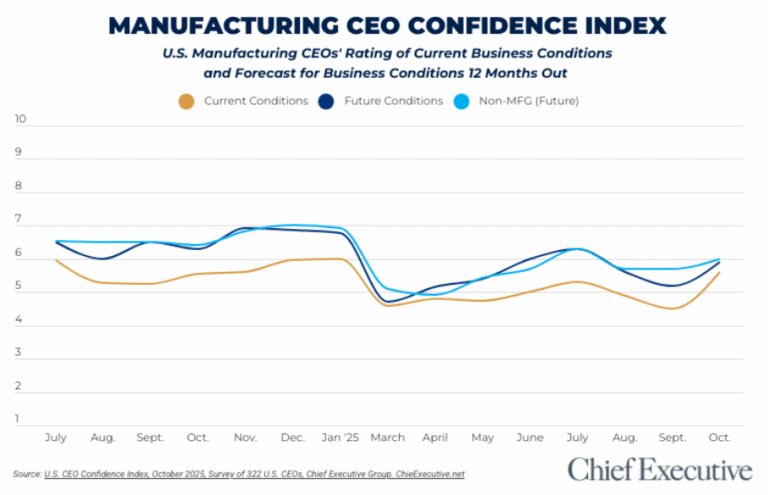
Inefficiency is one thing. But when that inefficiency creates a lack of collaboration, and that in turn leads to a loss of productivity, that’s a big problem for your company. While productivity loss can be difficult to measure, if even one employee loses an hour or more a day due to singularly inefficient workplace tools such as email, there becomes a significant trickle-down effect across teams and across the enterprise. When teams or departments are not aligned through collaborative processes, that misalignment can spiral out of control. Employees—including even the C-suite—become out of sync, contradicting each other and duplicating efforts. The outcome: diminished results, longer time to market, decreased revenue, and a higher probability of eventual employee turnover.
Recouping revenue due to lost productivity is not easy. You don’t just wake up one day and say to your management team, “Let’s run a tighter ship to increase productivity and recoup revenue” and have things fall into place. Here are some ways as CEO I work to empower teams to create a collaborative enterprise workplace and improve productivity and profitability with growth as the major goal; I find these best-practices are key for a CEO to be able to incorporate for successful outcomes.
1) Create a collective vision for collaboration. There are systems issues and cultural issues that are holding back true collaborative efforts at many enterprises. As your executives and managers feel empowered to step back and look at their systems, this method of observation creates an opportunity to make subsequent changes. As CEO, this is the time to seek input. You need to ask clear and direct questions to get to the nucleus of any breakdown in productivity or revenue. As your teams brainstorm, they should ask questions like:
This collective vision is going to set the stage for a successful implementation of new processes that engages everyone in a company-wide synergy.
2) Support collaborative transparency. To be successful in uncovering how a lack of collaboration has affected productivity and revenue, transparency across teams is crucial. Team transparency means there’s a clear way to see—in real time—who is working on what, where they are in the process, and how they are adhering to deadlines. Without transparency, the C-suite and managers may be micromanaging because they don’t see another way to ensure projects stay on track; or perhaps they know the process is affecting revenue and they don’t see any other way to move the needle. As CEO, if you work to implement solutions that help teams achieve transparency so the collective organization knows what projects are being worked on within expected deadlines, projects will stay on track and there will be a diminished need for deadlines to be extended or reworked. You may even find goals are met sooner when teams are all on the same page.
3) Encourage accountability. As CEO, you share a collective goal for your organization’s success, as everyone wins when you share the principles of accountability: who is doing what, in real-time, to strive toward the larger goals of an organization. Team members deserve to be acknowledged when they’ve successfully met their goals or deadlines. Having self-led methods to track tasks in a way that ensures they’ll be witnessed by their colleagues and their managers, including the C-suite, gives employees ways to demonstrate value. This accountability leads, ultimately, to increased leadership opportunities within an organization, allowing for enhanced employee satisfaction and retention. This increased visibility helps reward those who do strive toward higher productivity and revenue.
4) Overcome roadblocks. There are going to be roadblocks in any good implementation process. It’s not uncommon for a CEO or other C-level executive to push back on the new way of doing things. They may not see the long-term benefit of abandoning current processes and embracing new, collaborative ones. It may be an executive who just can’t shake the email habit, or still uses a paper-based planner, that’s keeping everyone who reports to them locked in an old paradigm. This is where leadership comes in. When there are demonstrated results from teams adapting even one new process–resulting in coming in under budget on a project, or delivering a project to a customer sooner than the agreed-upon deadline, the movement to embrace other new processes will be more seamless.
5) Monitor, monitor, monitor. Adopting a new way of doing things is an iterative process. The first effort may have made significant improvement, but in reality, only may have taken you 20% of the way there. As CEO, you also need to build in opportunities to reconfigure with your executive team and review feedback after new practices and technology have been implemented. This is the time to look at what’s working, identify the teams in your company that are leading the pack, and get them to open up about the benefits they’re seeing from these new processes—and then share that across the enterprise. It might take revisiting step 1; brainstorming again and sharing additional observations.
The most exciting part is that once your executives are having conversations and meetings about productivity, it’s going to impact other teams, especially as they see the results. Teams will learn it’s not only possible, it’s absolutely necessary to think critically about business workflows, processes, systems and technology. In these conversations, as CEO, it’s crucial to listen to ideas that can (and should) come from anywhere: an engineer might notice an opportunity to manage a technical process more efficiently; a customer support associate might spot a scalable new way to delight your customers. Be open to these suggestions as CEO, so you can both encourage and implement the changes together.
As CEO, make it clear to all that these kinds of observations will be taken seriously, implemented when feasible, and rewarded when demonstrably effective. The ultimate goal as CEO and decision-maker is to both set an example and create a workplace environment that helps to solidify a culture of collaboration and productivity. That kind of culture starts at the top, but it’s sustained by engagement at every level of your organization.



0

1:00 - 5:00 pm
Over 70% of Executives Surveyed Agree: Many Strategic Planning Efforts Lack Systematic Approach Tips for Enhancing Your Strategic Planning Process
Executives expressed frustration with their current strategic planning process. Issues include:
Steve Rutan and Denise Harrison have put together an afternoon workshop that will provide the tools you need to address these concerns. They have worked with hundreds of executives to develop a systematic approach that will enable your team to make better decisions during strategic planning. Steve and Denise will walk you through exercises for prioritizing your lists and steps that will reset and reinvigorate your process. This will be a hands-on workshop that will enable you to think about your business as you use the tools that are being presented. If you are ready for a Strategic Planning tune-up, select this workshop in your registration form. The additional fee of $695 will be added to your total.

2:00 - 5:00 pm
Female leaders face the same issues all leaders do, but they often face additional challenges too. In this peer session, we will facilitate a discussion of best practices and how to overcome common barriers to help women leaders be more effective within and outside their organizations.
Limited space available.

10:30 - 5:00 pm
General’s Retreat at Hermitage Golf Course
Sponsored by UBS
General’s Retreat, built in 1986 with architect Gary Roger Baird, has been voted the “Best Golf Course in Nashville” and is a “must play” when visiting the Nashville, Tennessee area. With the beautiful setting along the Cumberland River, golfers of all capabilities will thoroughly enjoy the golf, scenery and hospitality.
The golf outing fee includes transportation to and from the hotel, greens/cart fees, use of practice facilities, and boxed lunch. The bus will leave the hotel at 10:30 am for a noon shotgun start and return to the hotel after the cocktail reception following the completion of the round.